These last few weeks up on the Altiplano, reliable internet access has been somewhat patchy. I’ve now reached La Paz; here’s the first of a series of Bolivian catchup posts…
Uyuni-San Vincente-San Pedro de Lipez-San Antonio de Lipez-Quetena Chico. For more details, look no further than the excellent Andes by Bike.
In another about turn, I’m heading south once more, albeit briefly… A decision has been made: we can’t leave the Bolivian Altiplano without at least attempting to ride up one of the highest roads in the world. Volcan Uturuncu scratches the atmosphere at 6008m, and can be accessed – to 5777m, at least – via a rugged jeep track that wends its way up to a former sulphur mine. At neigh on 19,000ft in altitude, this puts it comfortably above anything I’ve ridden in the Himalaya.
And so, instead of hitting the pancake salt flats of Ayuni and Coipasa, I find myself heading back into the Sur Lipez; past one mine after another, cresting one mountain pass after another. It’s a journey both shared with herds of nonchalant, fluffy llama, and sustained (I’m slightly ashamed to say) by their good selves too – in the form of steaks, stews and soups that make up the staple diet in these elevated parts. Hopefully no one will notice the shortfall, given our cyclist’s appetites. There are, after all, apparently two million llamas in Bolivia.
As for us, we’ve now grown to a group of three; one more Pugsley has joined the fold. Miguel and I have thrown Andi in at the deep end. Fresh from a flight from Germany, he’ll soon be tackling 5,000m passes, as we bounce along a high plateaux that refuses to dip below 4.
As expected, the journey proves to be both beautiful and challenging. A day out of Ayuni, we branch off the main road to Topiza, leaving kidney-jarring corrugation for the delights of a barely travelled jeep track. Striking deeper into the Bolivian backcountry, we ford rivers, lug our bikes across deep gouges in the road, pedal through sand, and camp in llama pens, shielding us from a cold and biting wind.
The settlement of San Vincente is marked by a roadside sign – the town lays claim to being the final resting place of outlaws Butch Cassidy and the Sundance Kid, killed in an infamous gun battle with the Pinkerton Agency in 1908. True or otherwise, the surrounding hills of this bustling mountain community are now scarred with renewed mining activity; probably of more importance to locals these days than American gunslinging folklore. There, the mood is upbeat. The comedor in which we refuel is run by a jovial lady; her ‘llama bolognese’ is the tastiest meal I’ve had in Bolivia, and fills a gaping whole in my stomach. When the miners with whom we share our table have all returned to work, she sidles over for a chat. How can you cycle with legs like those? she asks Andi, with a smile. You need ones like these, she laughs, pointing to her own more ample thighs.
The characterful continue between steep passes and ribbons of dirt. In San Pablo, a man on a brakeless singlespeed accosts us and shepherds us towards a cheap hospedaje. The school girls who run the adjoining restaurant serve us up a mean plate of cold rice and tepid, chewy llama steak for dinner. It’s the prelude to Bolivia Day – celebrating country’s independence, dated August 6th 1825 – and all the village drunks are out in force. Their tipple? Coca Cola, blended with a local brew so potent we use it to light our stoves – which, by the looks of it, also guarantees total inebriation for 48 hours straight. It’s of little surprise that when we order breakfast the next morning for 7am, it finally appears in the form of a plate of cold rice, fried eggs and translucent coffee over two hours later.
As we ride out past the plaza, the Bolivian flag is being raised lopsidedly and anthems are being sung with suitable pomp and circumstance. An elderly lady sells asado out of a wheelbarrow – a chunk of llama meat, dished out with her hands, served with potatoes, and a tomato and onion salad. It’s delicious, and we wash it down with a refresco called linasa – more than making up for our meagre first breakfast.
Forty kilometres down the road, we stop in San Antonio de Lipez, home to more Bolivian flags fluttering in the afternoon wind, and another contingent of glassy-eyed drunks pirouetting from one wall to the next. When they see us, they chase us in a slow, zombie-like shuffle, accosting us with good natured but drunken heavy-handedness. An endless loop of dirge-like marches resonate from the village square, a small crumbly quadrangle where two rattly speakers are stacked atop one another, surrounded by a ring of empty beer cans. As ever, our Pugsleys draw enthused attention. Kids squeeze tyres, point at disc brakes and talk in hushed tones. Like motorbikes, says everyone admiringly. Inevitably, celebrations continue late into the night, at least for those who are still standing.
From here, the dirt road we’re following is in far worse a state – pitted with teeth-rattling corrugation and sandy in parts, mostly due to the tourist jeeps using it as a cut through from Topiza to Laguna Verde. Those within wind down their windows and scream enthusiastically at us as they speed past, blissfully unaware it seems of the dust they coats us in, or the havoc they wreak on the roads. I try hard not to think dark thoughts as we jarringly bounce around in their wake.
But as we approach Uturuncu, the weather takes a turn for the worse. Santiago, the guard at the Eduardo Avaroa Reserve, suggests an offering to the mountains would be appropriate. Following local tradition, Andi – the only smoker amongst us – exhales his German tobacco towards the seven anointed points, including Papa Uturuncu, volcanic Kingpin of the Sur Lipez. Our Bolivian companions nod encouragingly and we pedal on, hopeful.
Until, that is, we awake to snowfall the following morning in Quentano Chico. It would seem there’s nothing to do but wait, until Papa Uturuncu is appeased…
If you would like to keep up with where I am between tardy blog entries, I keep my While Out Riding Facebook page regularly updated – along with posting extra photos and regular gear ponderings. You can find it here. Occasionally, I pop some pictures up on Instagram too.
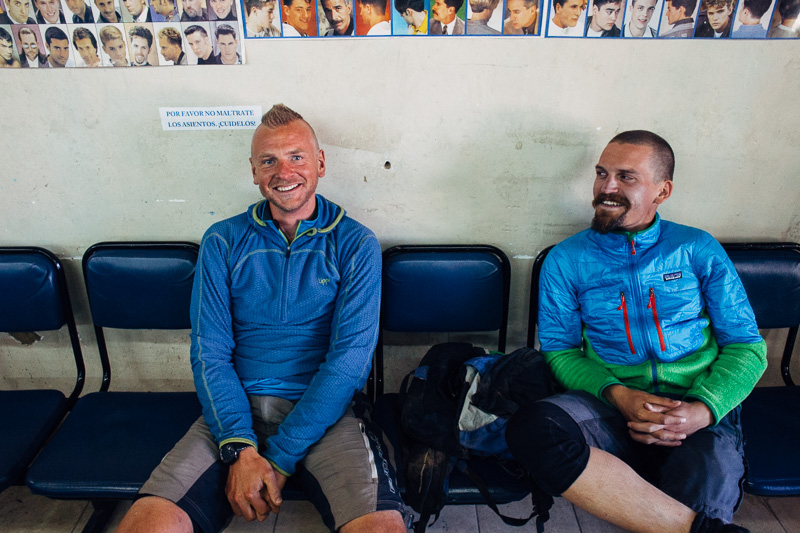
Entering into the Mad Maxian spirit of Bolivia, Miguel treats himself to a pre-trip hair cut: the mohawk.
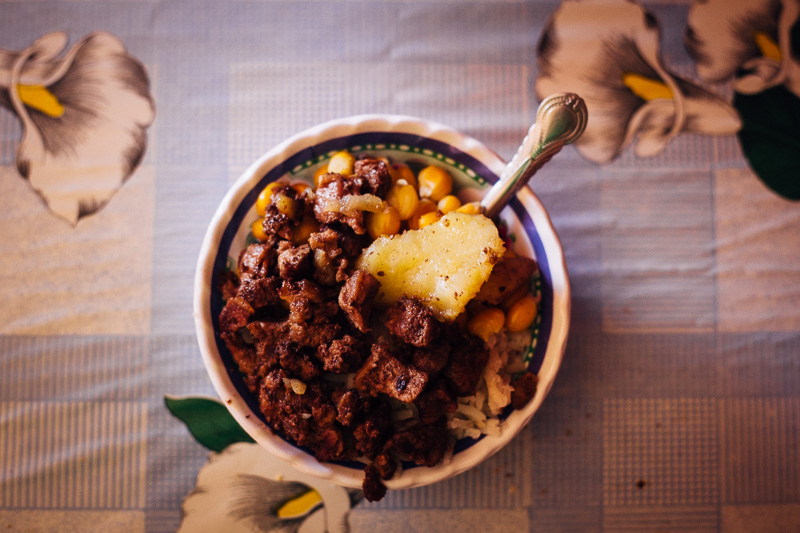
Our cycling fuel of choice for this leg of the journey: llama, joined here by giant pellets of sweetcorn and a sautéed potato combo.

Llama bolognese in San Vincente. I like to imagine Butch and Sundance enjoyed something similar, perhaps between bank holdups.
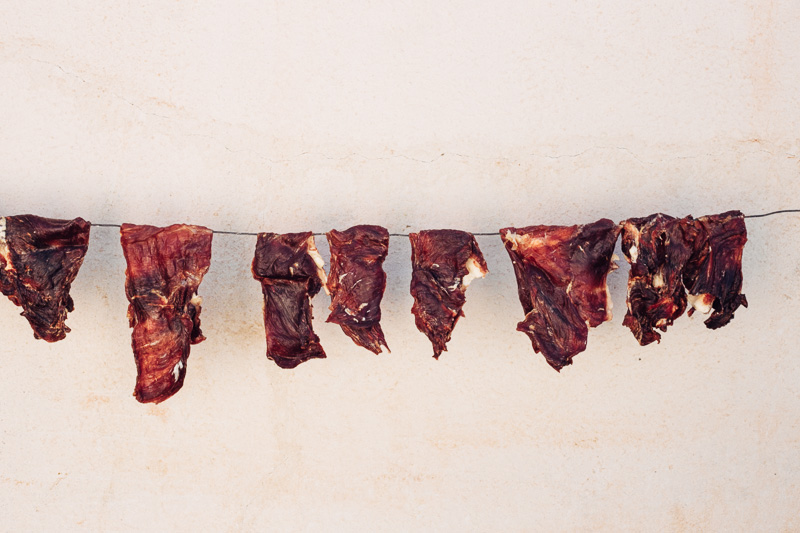
Llama jerky – called charque, in these parts. Surely these would have been a gunslingers’ favourite.
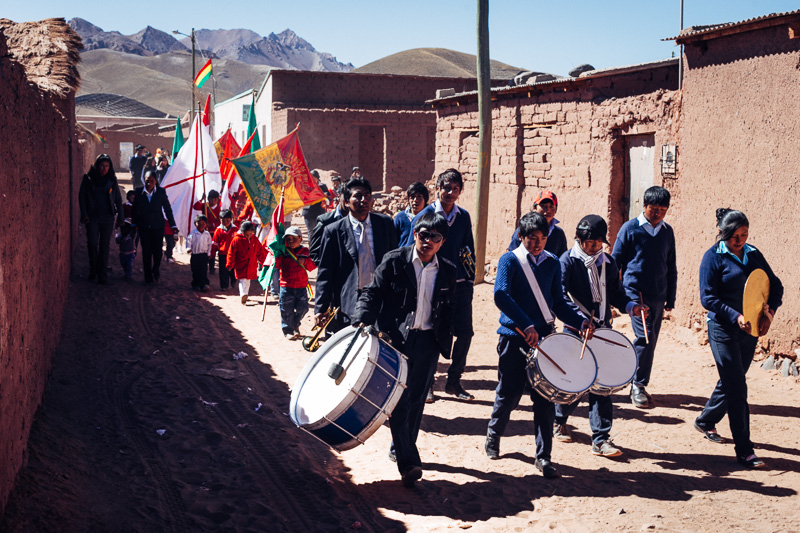
August 6th is Bolivia Day – Dia de la Patria – celebrated throughout the country with drunken relish.
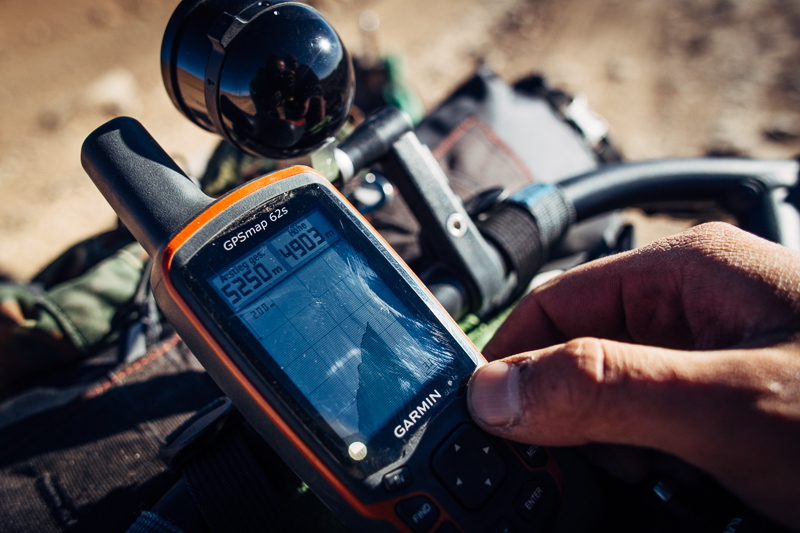
Our destination, the mining road to Uturuncu, lies almost 900m loftier than this, one of our highest passes so far.
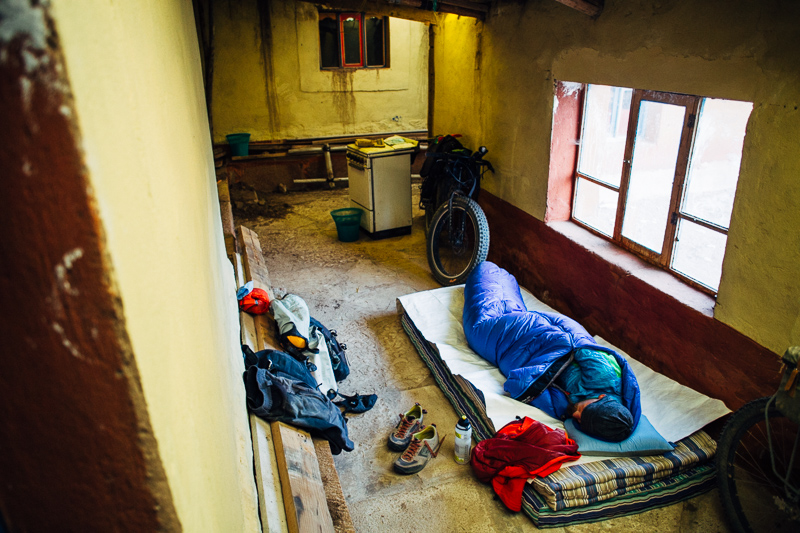
As luck would have it, we chance upon an unlocked, semi-abandoned hospedaje. It’s perfect dirt bag lodging, complete even with dusty mattresses.

The following morning, we’re up at dawn, all set to conquer Papa Uturuncu… except snow suspends play. Fat bike or no fat bike, the likely conditions fifteen hundred metres higher quickly convinces us to stay put. So we sip llama soup… and keep our fingers crossed for a more auspicious sign the next day.
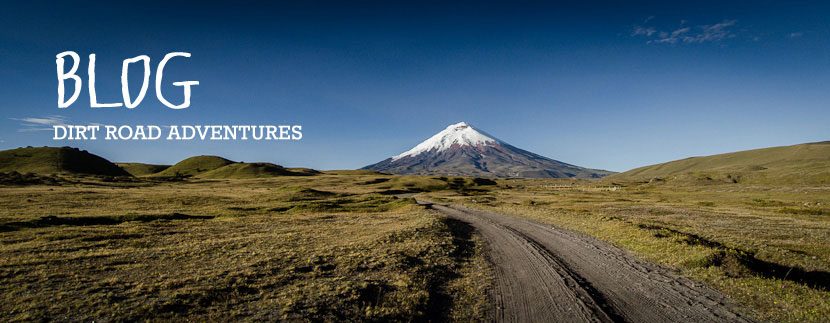
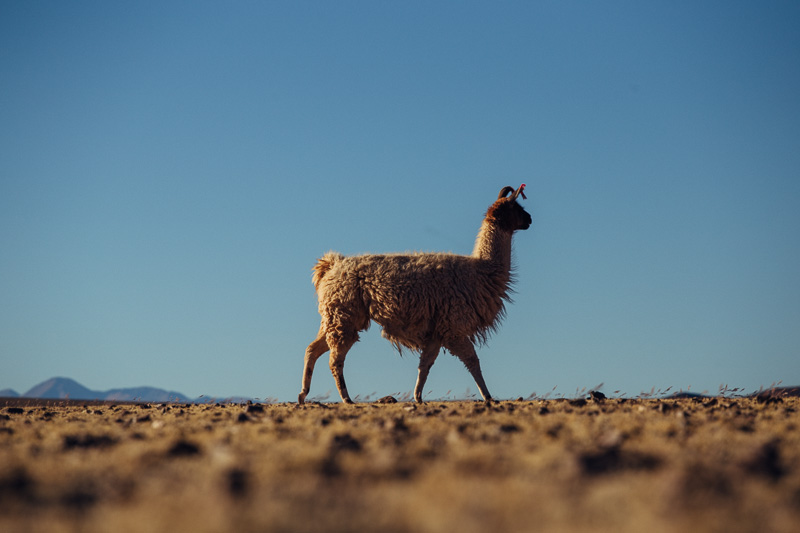
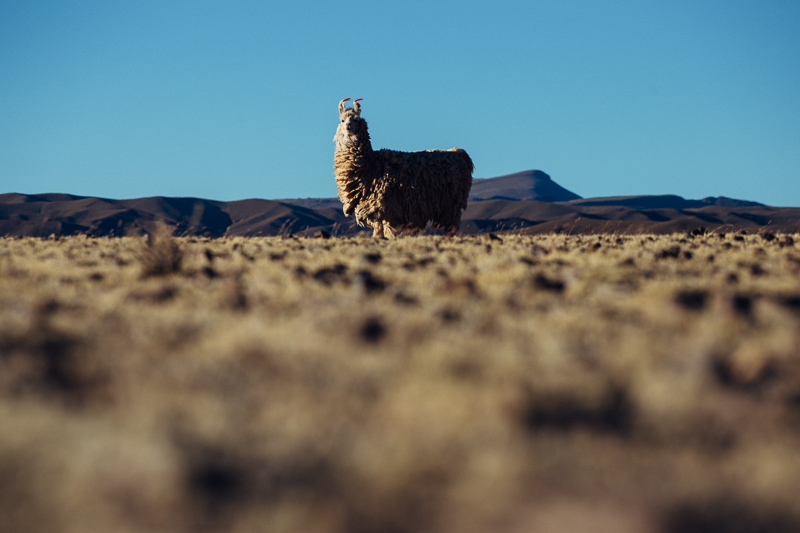

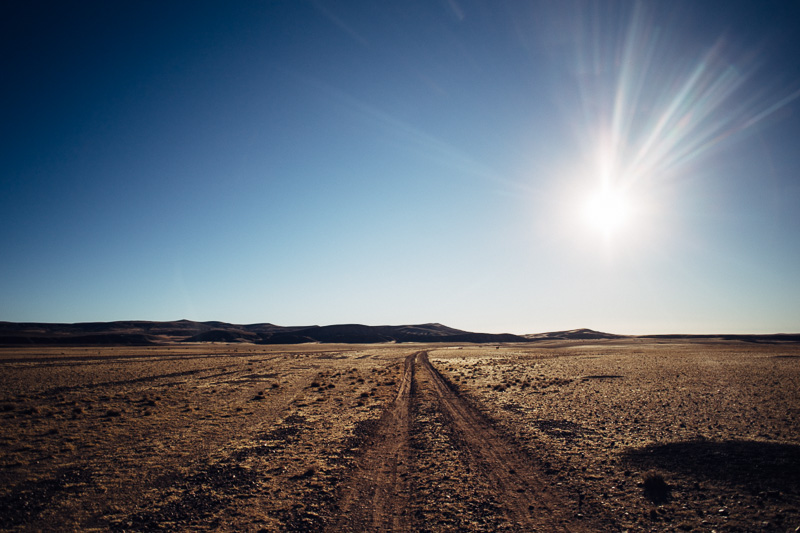
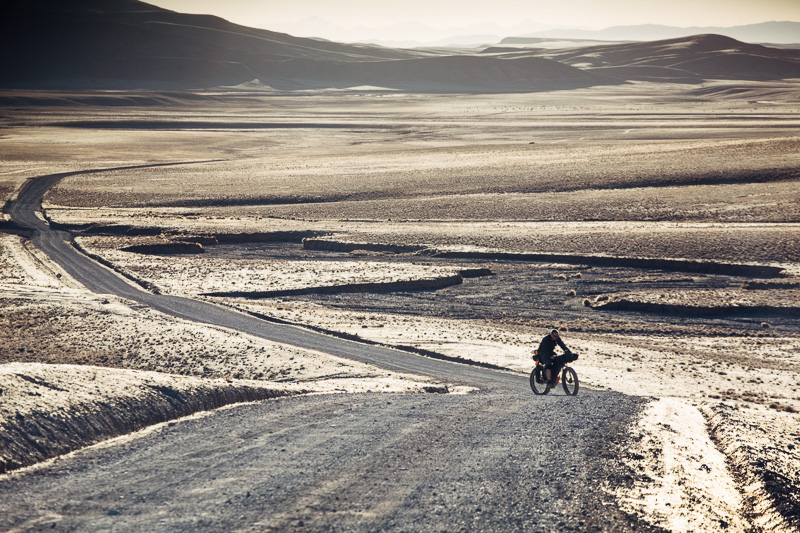

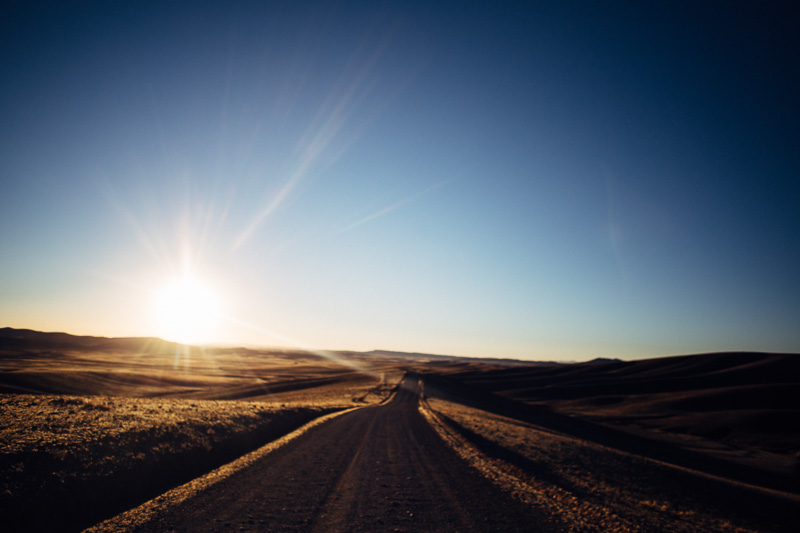
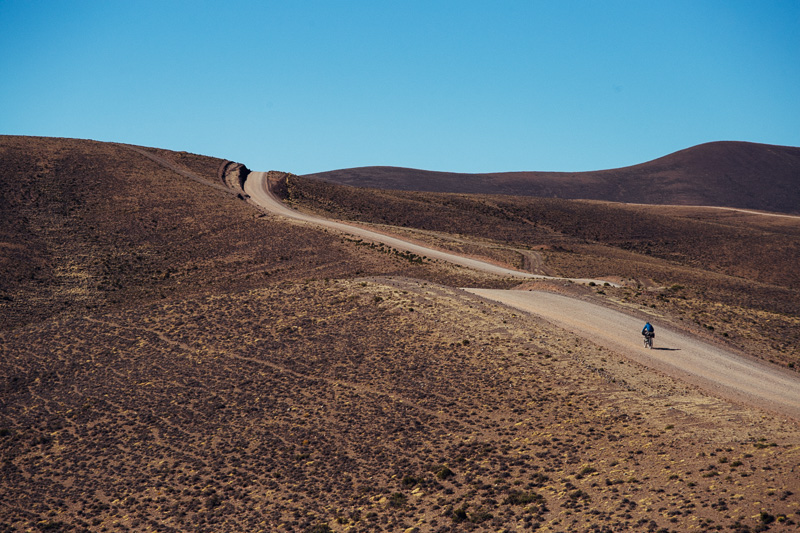
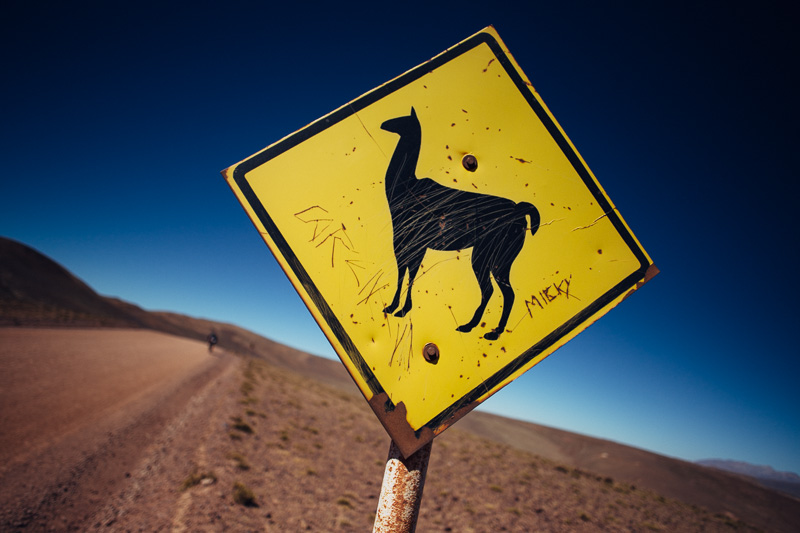
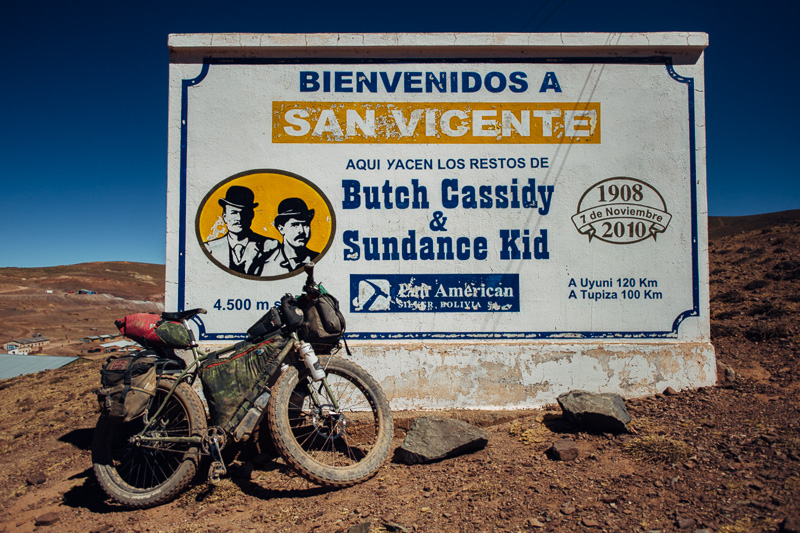
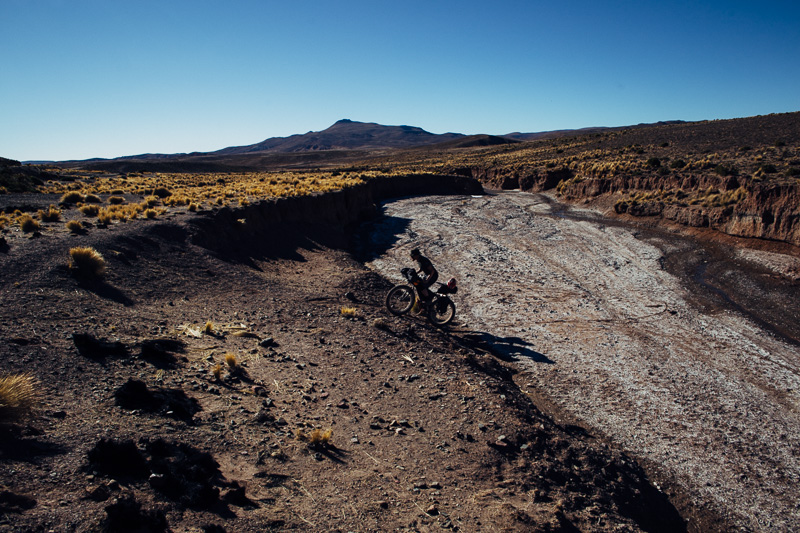
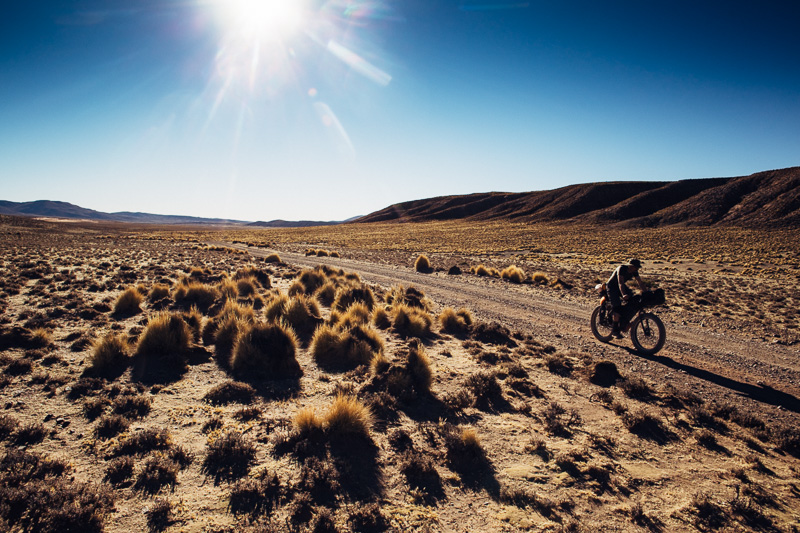
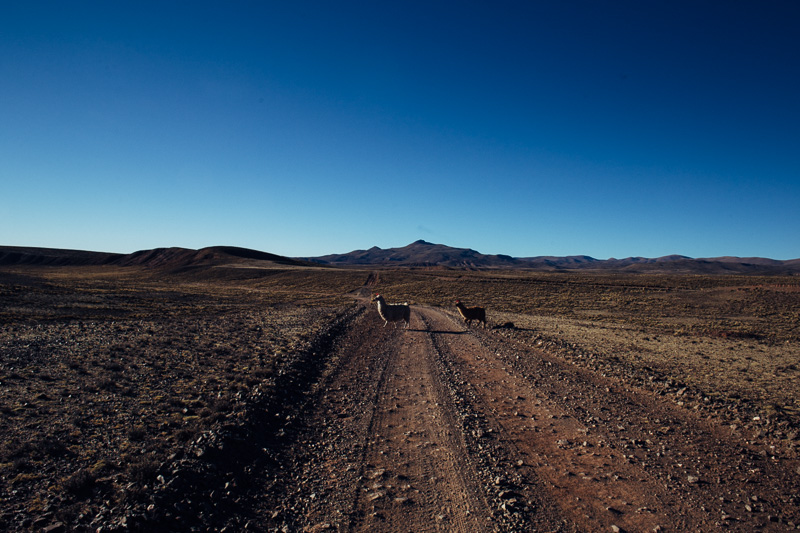
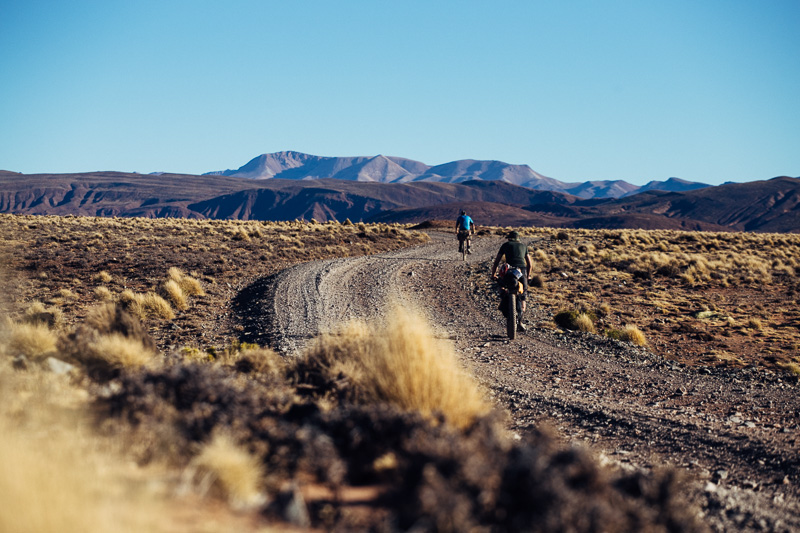
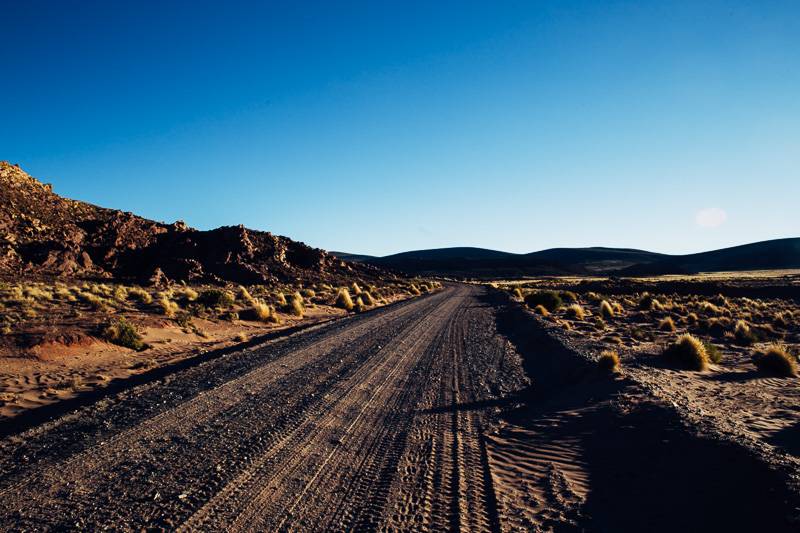
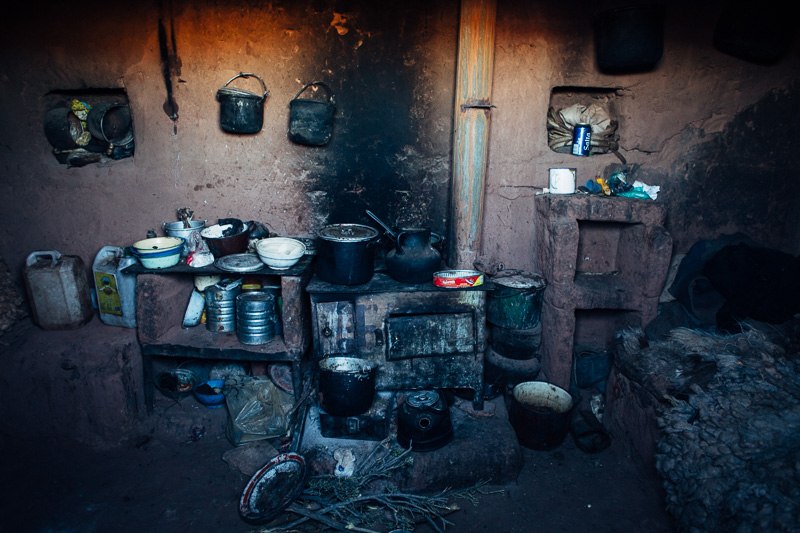
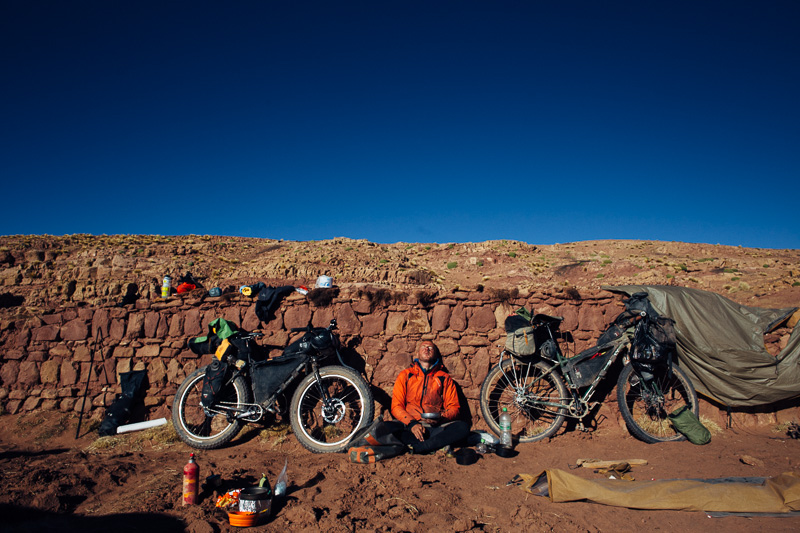
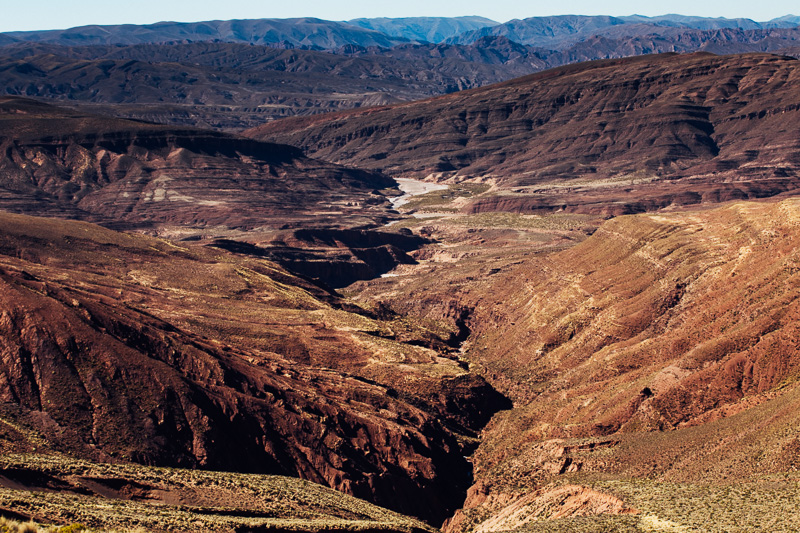
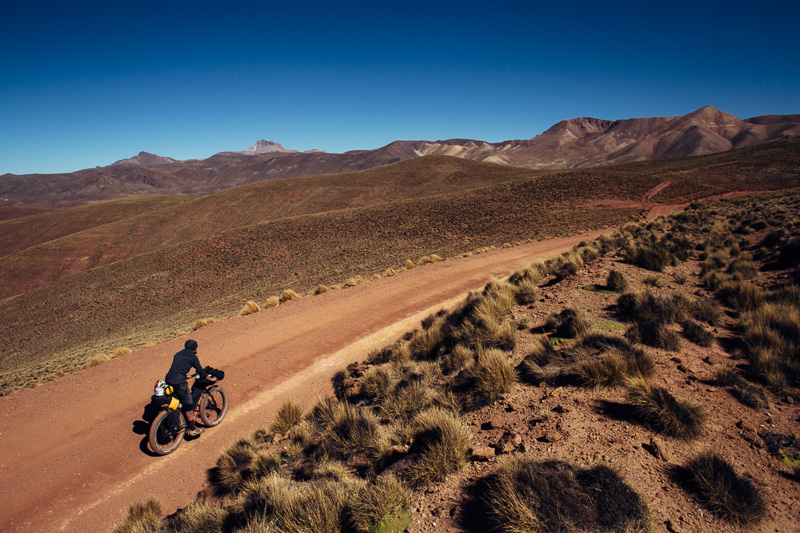

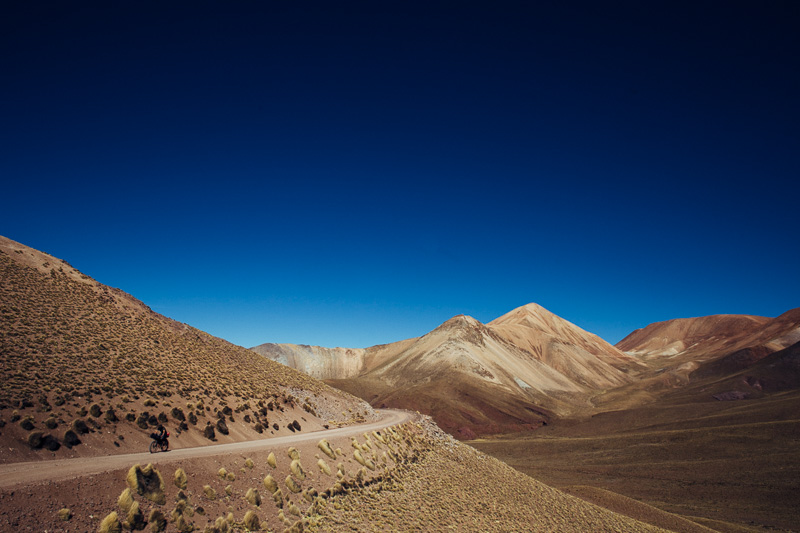
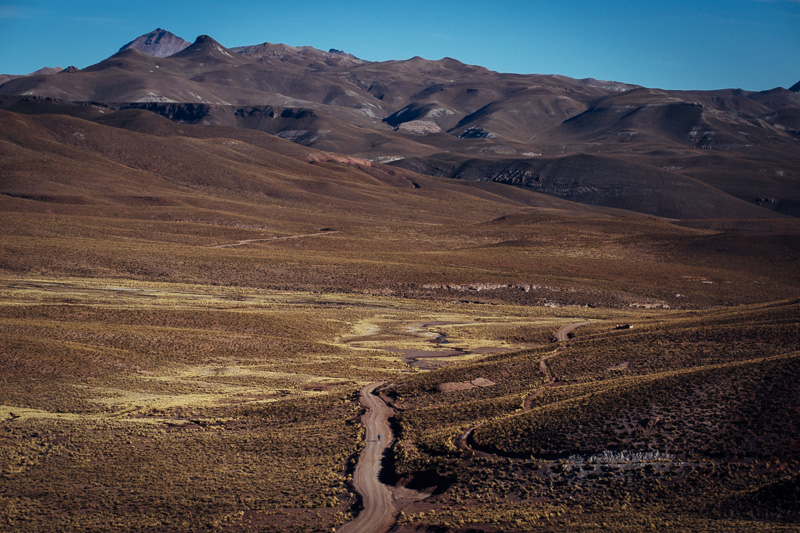
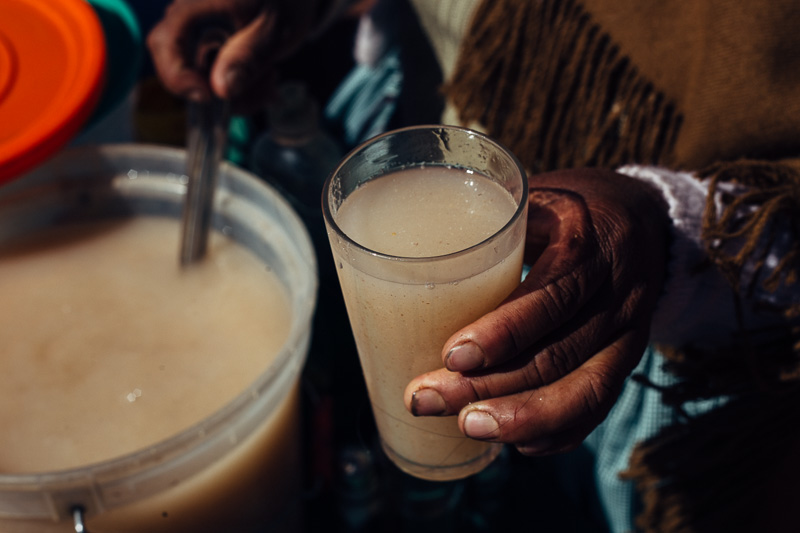
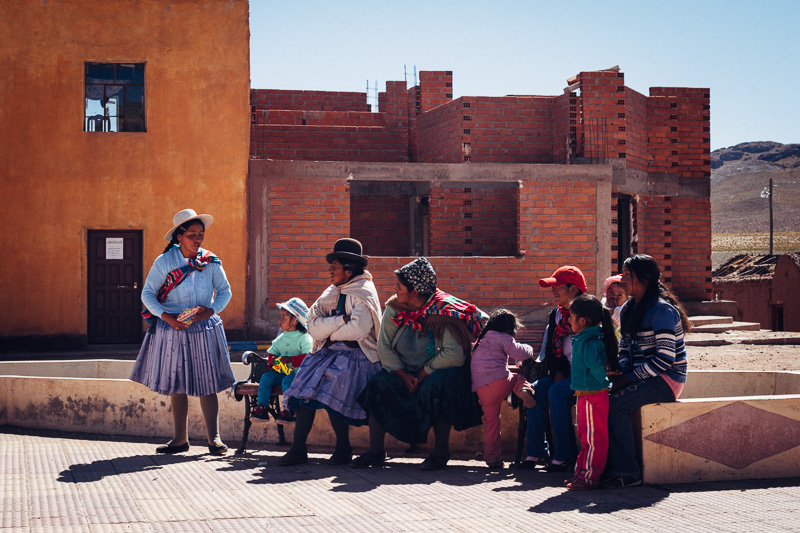
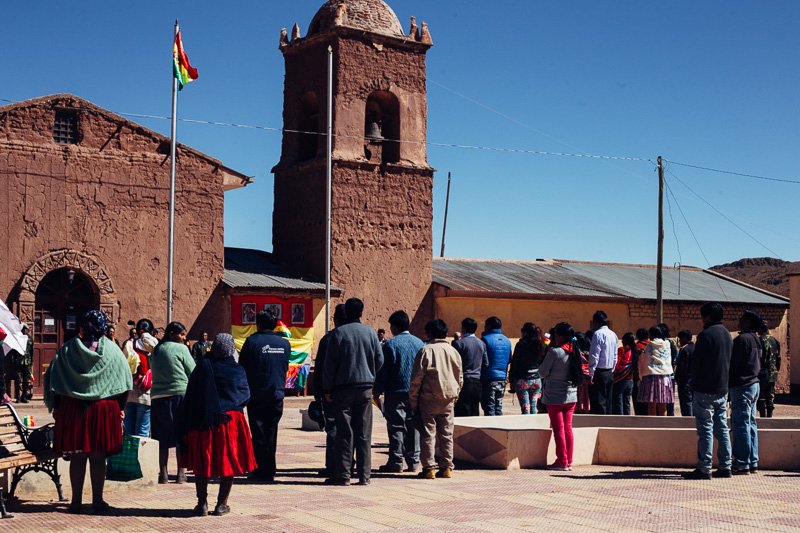
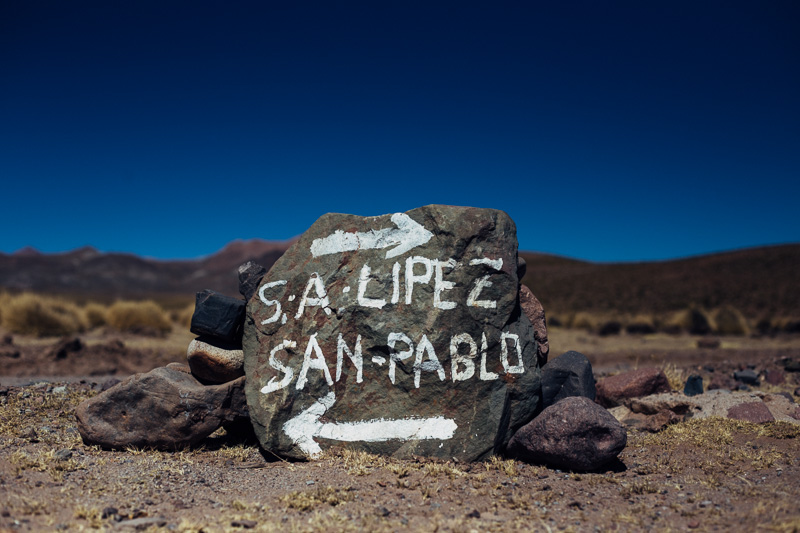
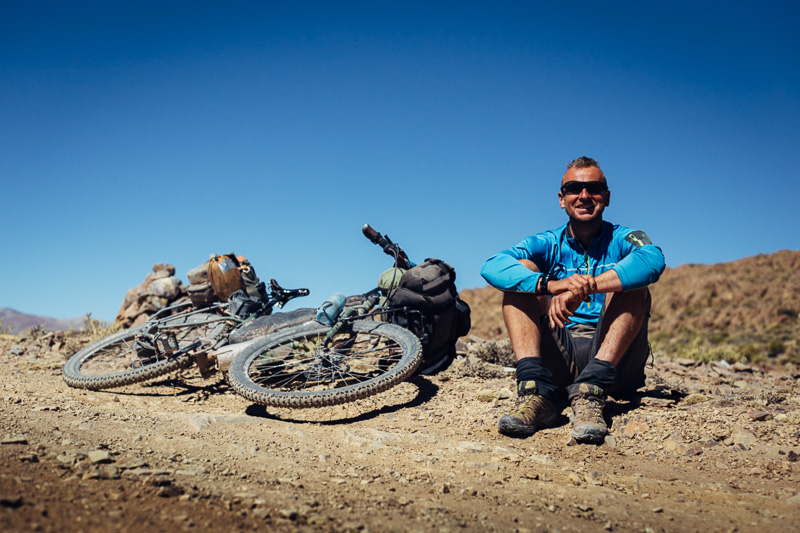
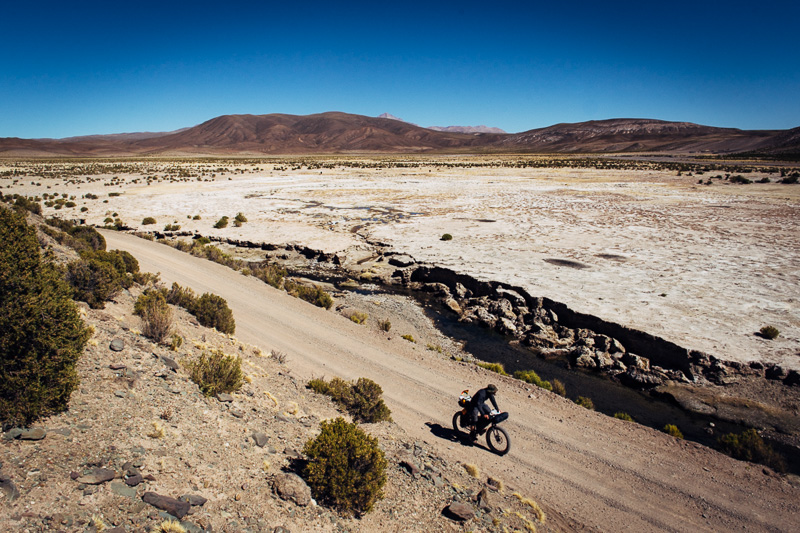
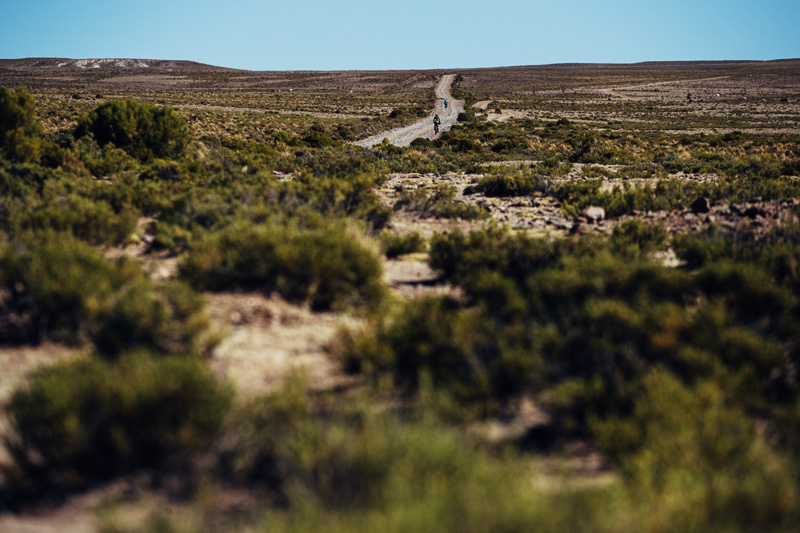
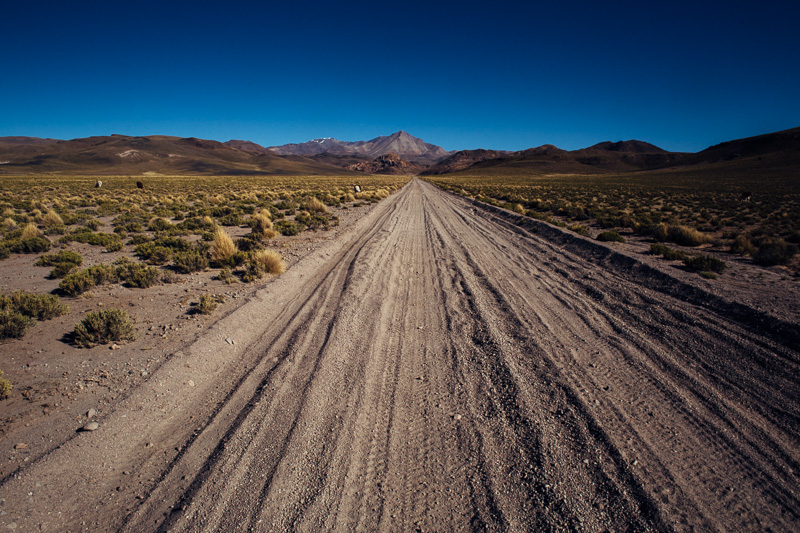
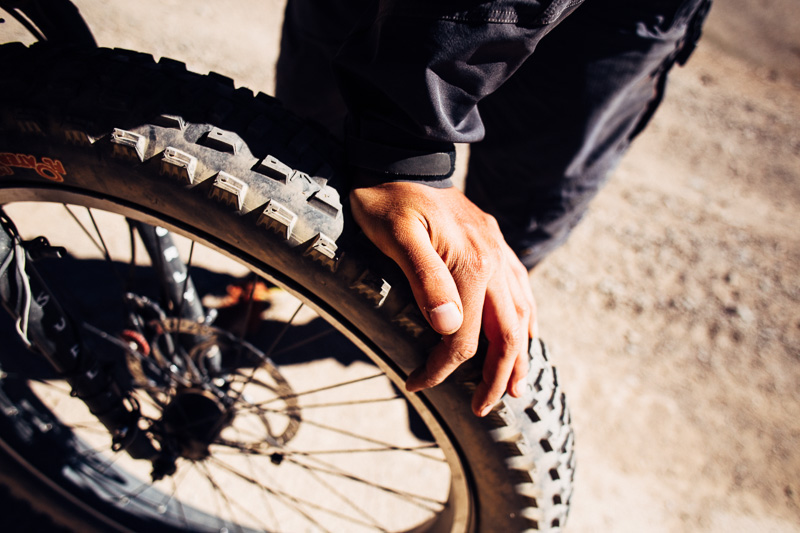
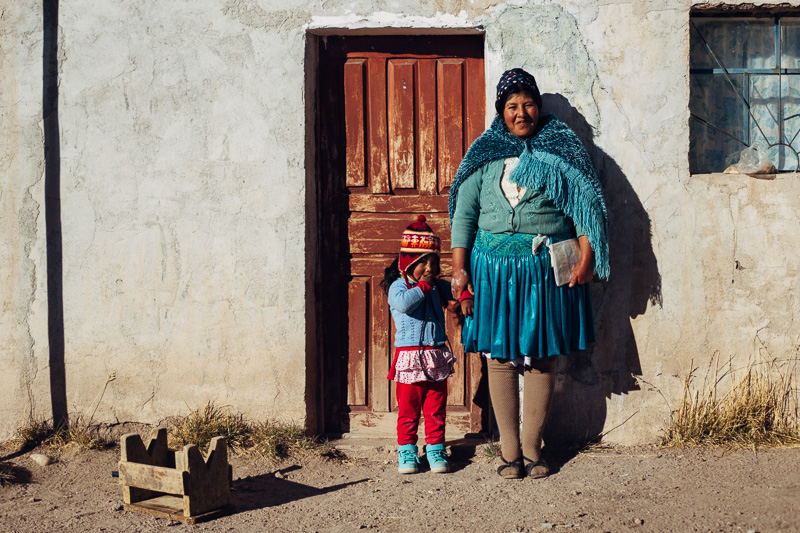

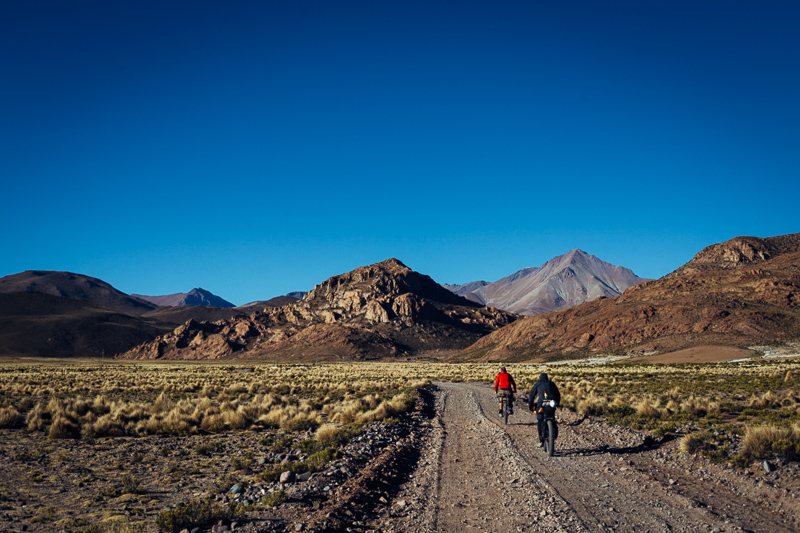

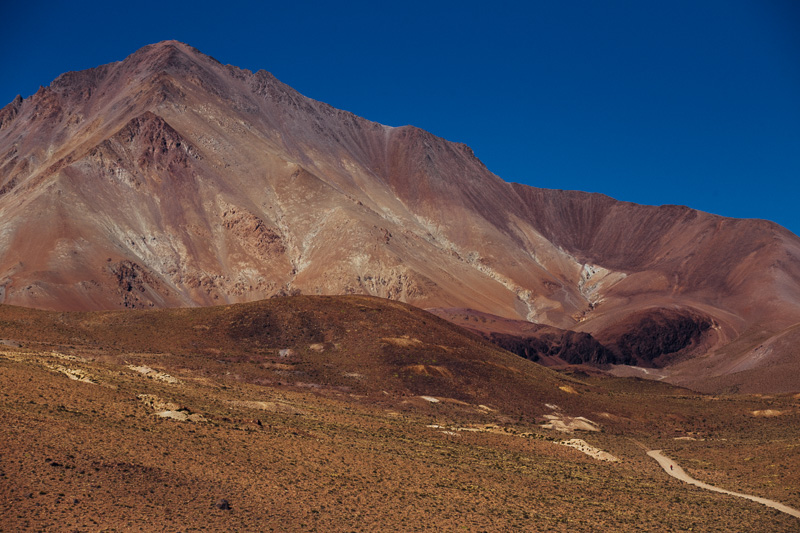
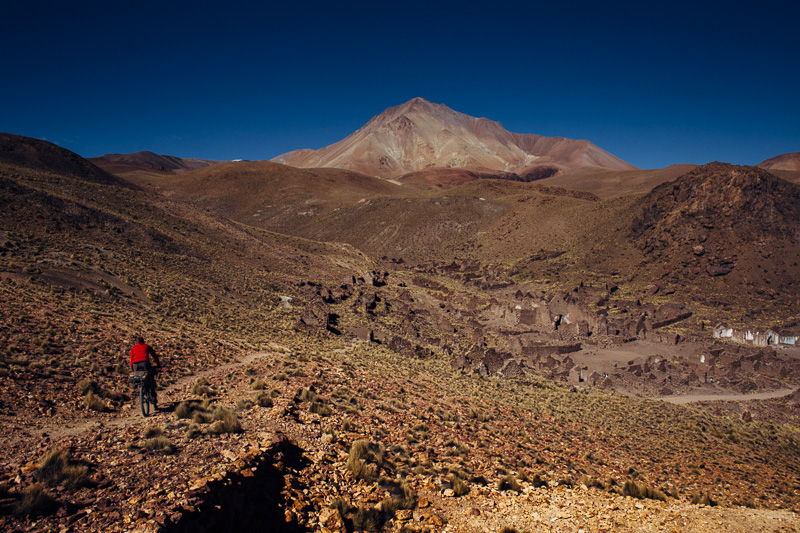
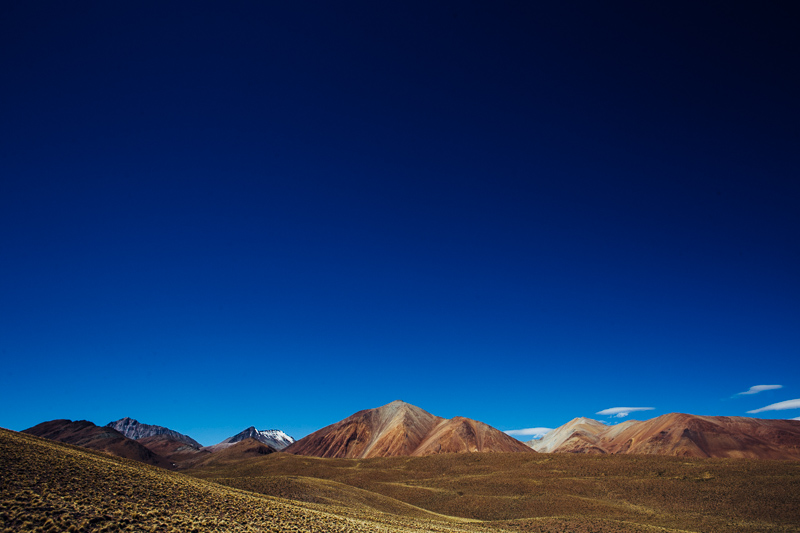
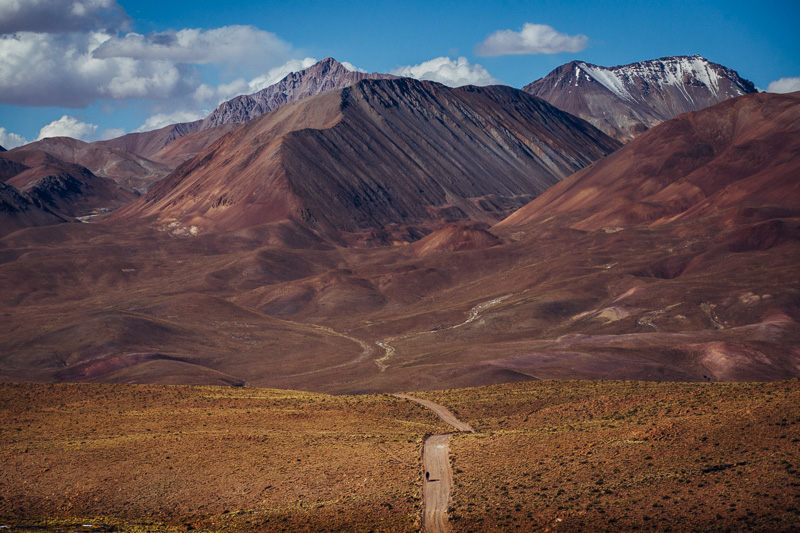
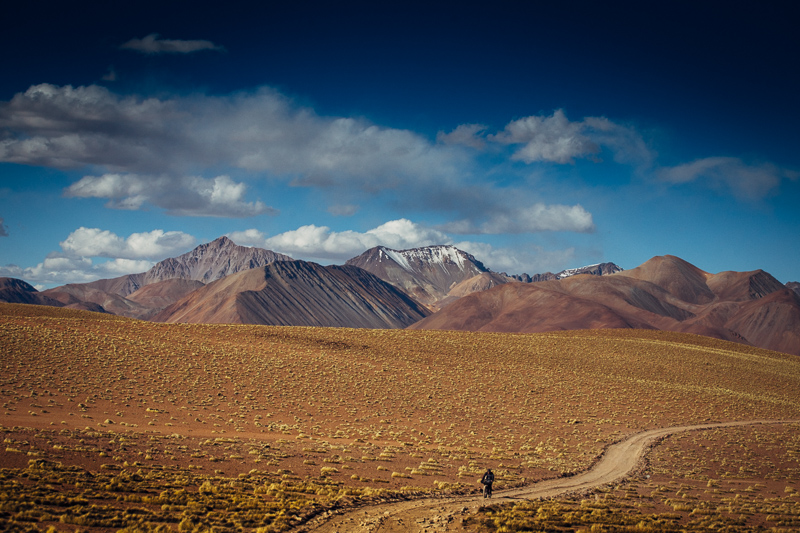
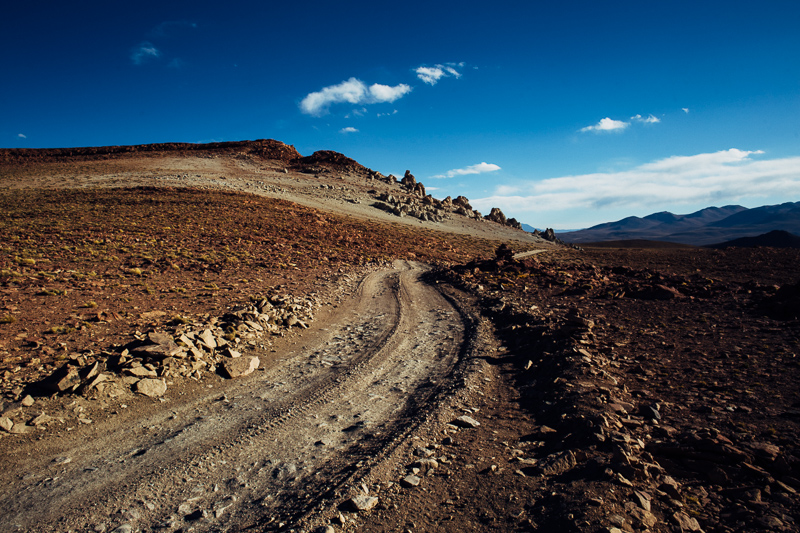
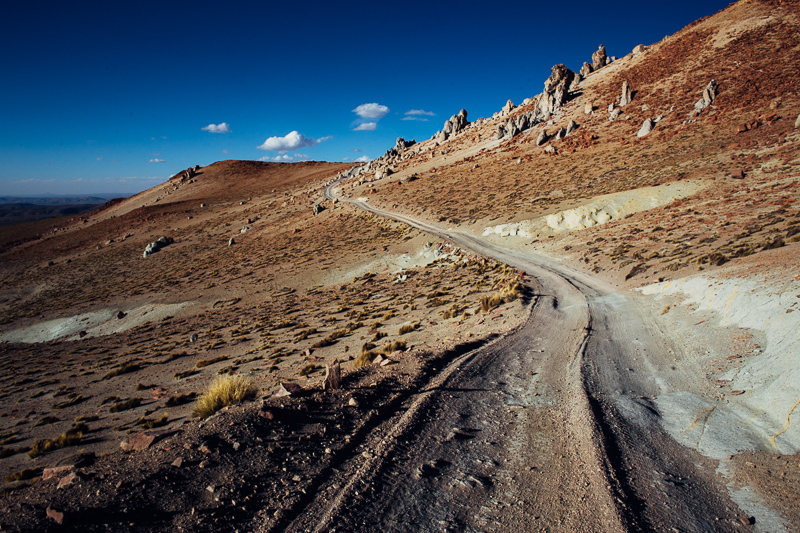

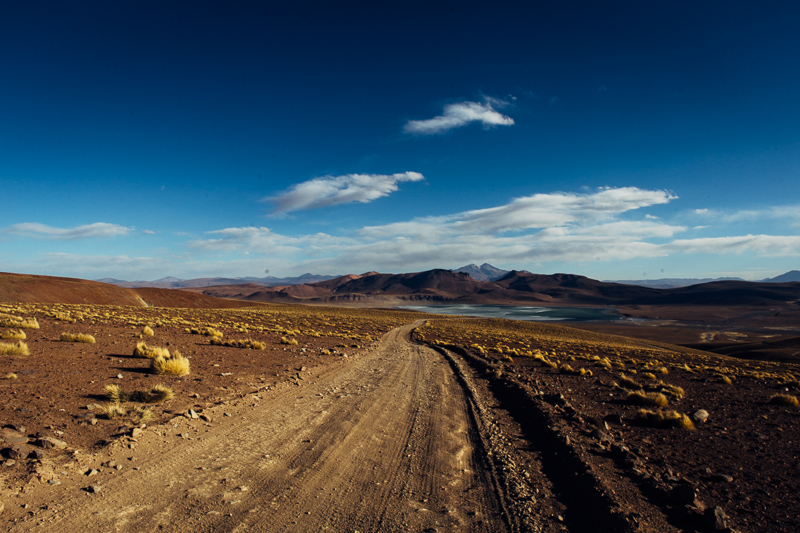
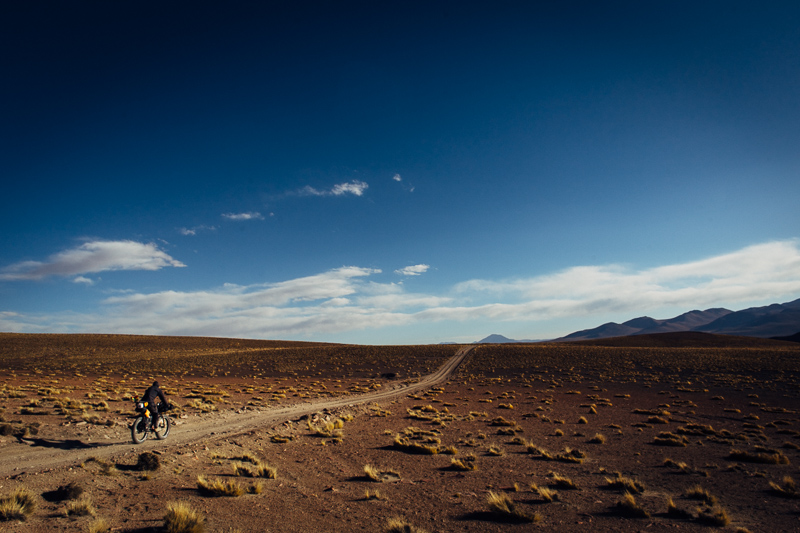
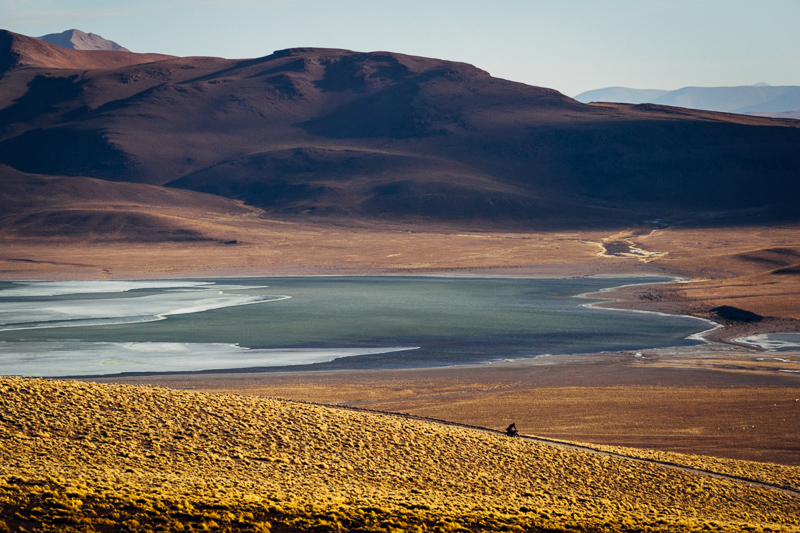
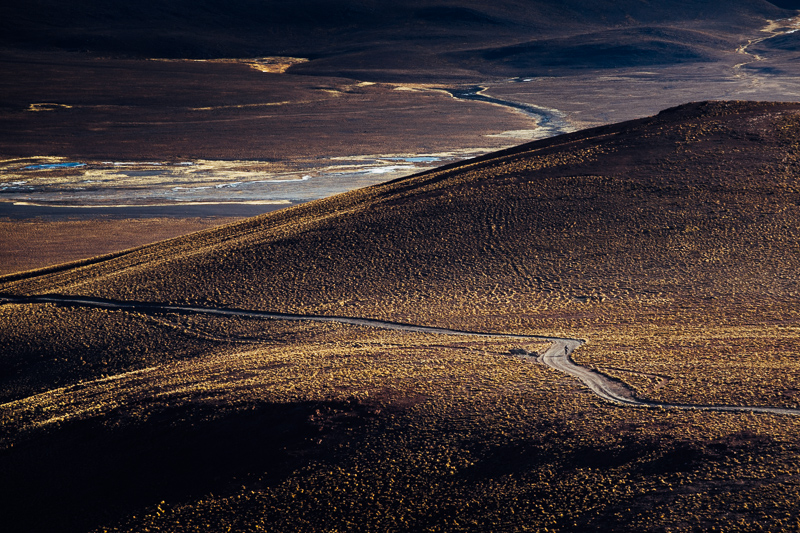
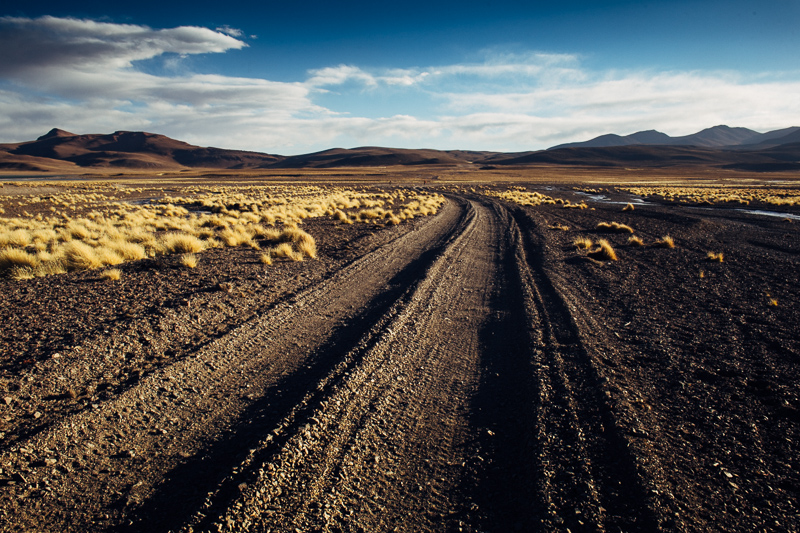

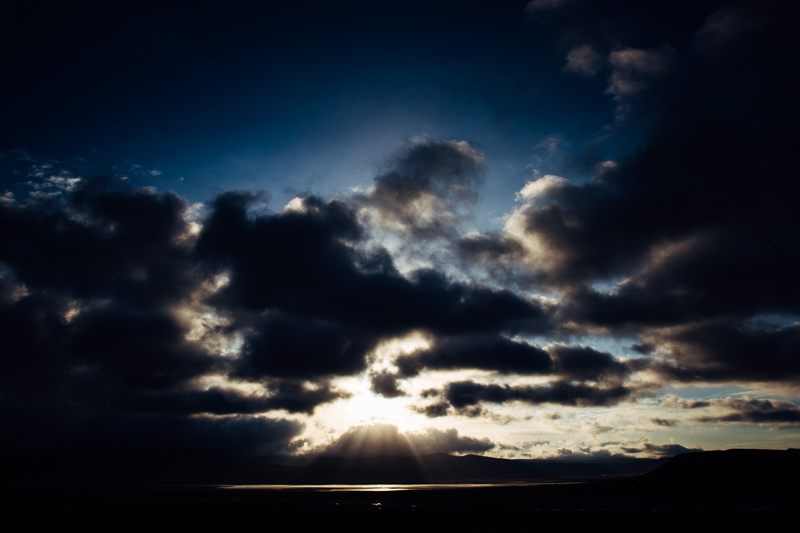
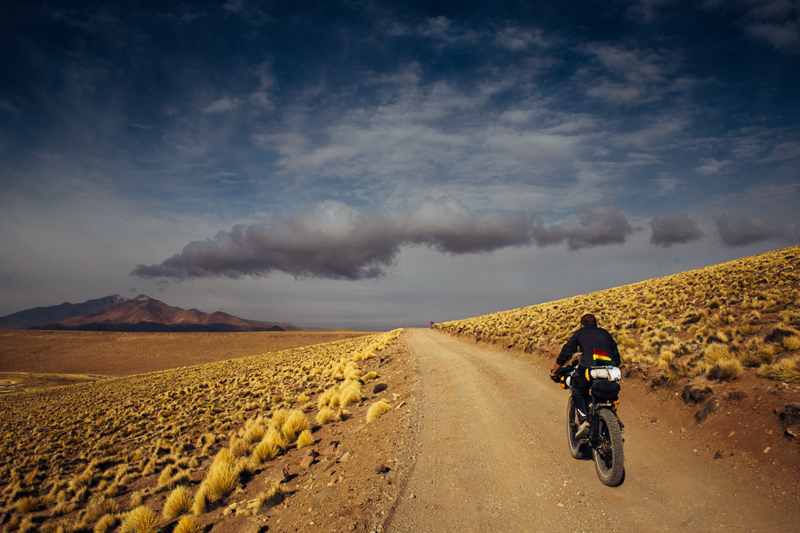
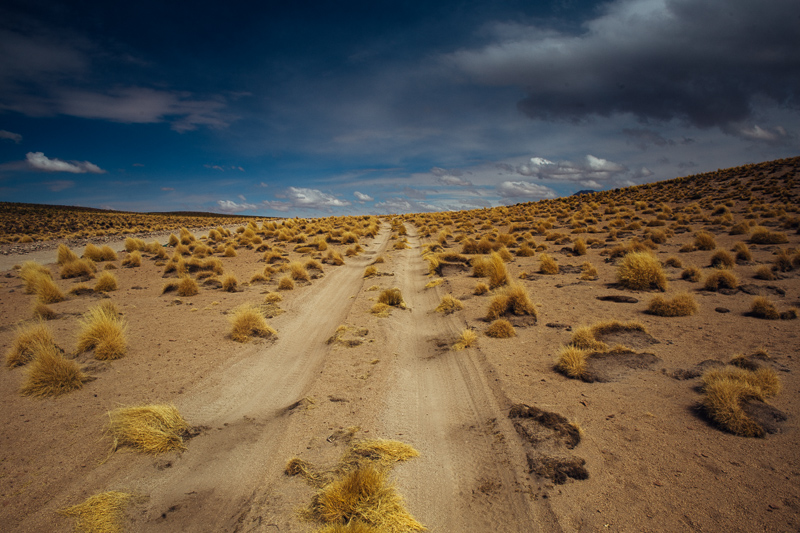
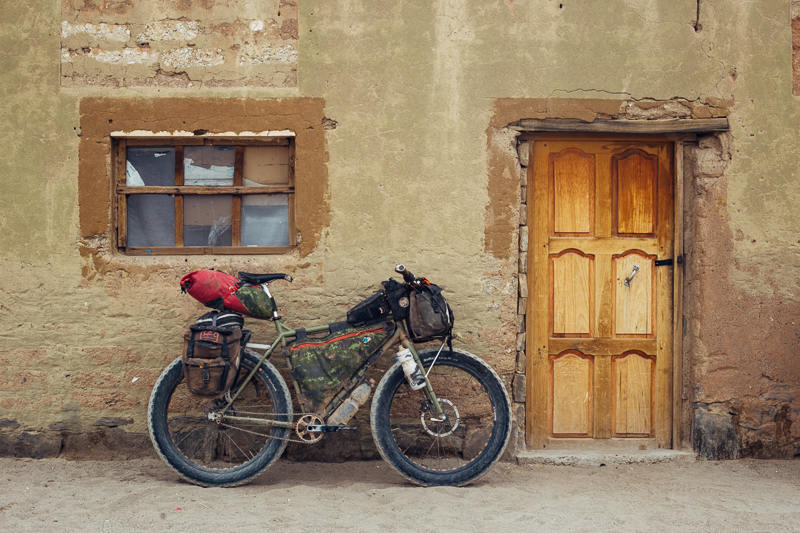
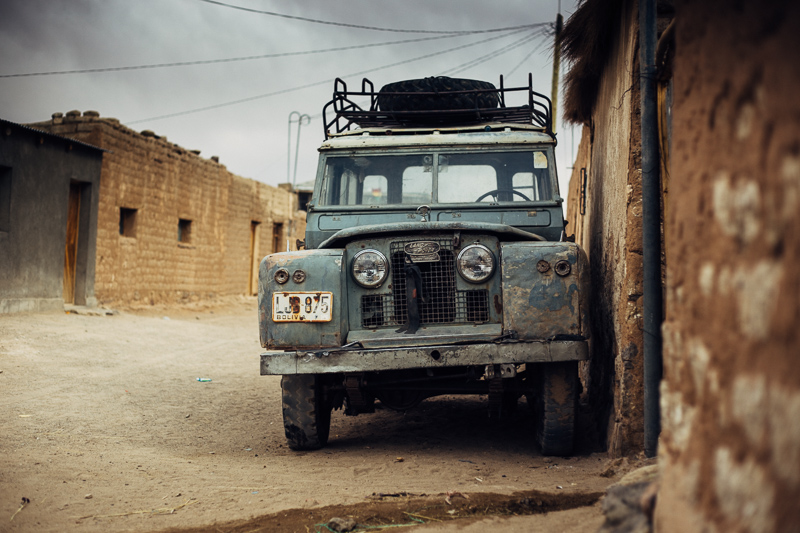

Wonderful!
Cheers Bill. Only later did I find out that there was a little Butch and Sundance museum in the mining town of San Vincente. Gutted! I almost turned round to go back and see it…
Hey bro, where’s the picture of you in your bowler hat?!!!
Still on the lookout for one that will fit my big Gilbert head!! Going to ‘hat street’ in La Paz to try my luck there…
As someone who has only toured in America, whenever I see what appear you be your domicile pictures (like “a doer upper” here), I wonder: Don’t you worry about your bike getting stolen? Are there just no other people where you are? Or do you trust them? Are a very light sleeper? Bikes are secured by some means not visible in photos? Inquiring minds want to know.
hi Joe. I admit to being pretty lax about bike security up in the mountains (I don’t even carry a lock these days) but I’m definitely eagle-eyed in the big Latin American cities – especially the touristy ones. In this particular case, there was plenty of room for the bikes to come inside with us. But seeing as there wasn’t a soul for miles, they’d probably have been fine outside.
If I’m concerned for some reason when I camp, I’ll tie my bike to my tent – in a way that I’d be woken up if anyone messed with it. All cheap hospedajes will let you bring your bike inside, generally even within your room.
Beautiful. Keep it coming.
Thank you. Next episode is coming up soon!
Amazing and beautiful pictures as always Cass!
Thanks Lorely! Hope the three of you are really well.
Toats amazeballs. Looks pretty darn tough to me, a fine effort chaps. She’s right about those legs mind…
Great photos and text. Thanks for sharing.
Do you have troubles finding decent water to drink in such a dry environment?
Thanks.
Water hasn’t been much of a problem on the Altiplano so far. There’s a big push by the current government to provide clean water in small communities, so I’ve rarely needed to use my Steripen.
The question about water was one that even I had. Interesting to know that the govt. has been doing work in this regard. Cheers!
Cant wait for the next installment, this brings back such great memories and encouraging to see that not much has changed in the way of road quality between Tupiza and Uyuni area.. Thought of you and Sage today too, as I set off on a Gabriel’s first Chariot excursion at 2mths, albeit no more than 10k.
Easy on those llamitas!
10km, Nice! Sage’s first ride was at 10 weeks, but just a wee outing along the bikepath. Too cold in New Mexico over the winter for more than that.
The road from Uyuni to Tupiza is pretty corrugated these days, it seems. The sideroad to San Pedro de Lipez was dirt riding bliss… not a calamina in site!
Pingback: Appeasing Papa Uturuncu…And Pedalling To 5777m | interpedalers - Discovery by Bicycle